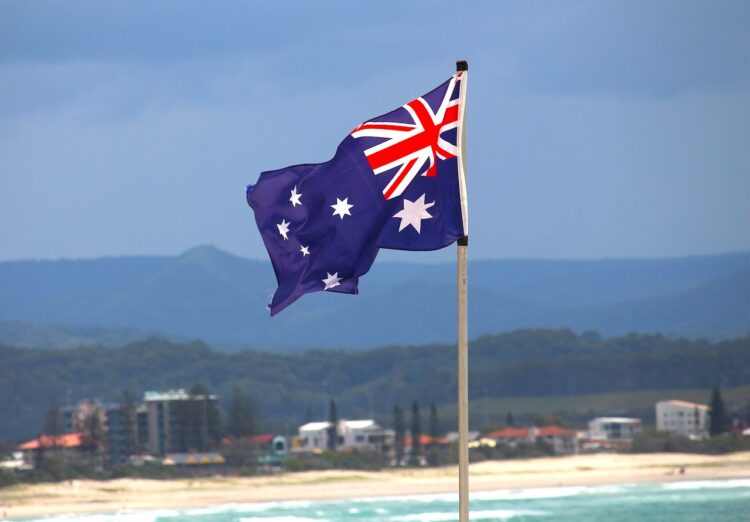Travelling to Australia? Are you going to be gone for a week? Two or three weeks? Will you be backpacking your way across the country or are you aiming for a more comfortable stay?
No matter how you plan to explore the big country on the other side of the world, you’re probably wondering how to pack. What should be in your suitcase? We answer that question in this article.
Table of contents
Packing for Australia – Suggestions and tips!
Here’s our complete packing list for a trip to Australia. It works for both men and women and is designed to help you plan, think and pack.
The packing list includes everything a visitor to Australia could possibly need. This may mean that there are things that are not relevant to you. Just ignore those! See the list for tips, examples and inspiration.
After the packing list, you’ll find smart packing tips along with a review of Australia’s very strict entry rules. Don’t miss it!
Baggage and hand luggage
- Travel bag
- Backpack/Cabin Bag
- Bag (Get a discount with a Go Outdoors discount code!)
- Transparent plastic bag
- Smart tag for monitoring bags
- Mouthguard
- Packing bags/packing cubes
Insurance, travel documents, and more
- Travel insurance document
- Documents for health and accident insurance
- Passport valid for at least six months
- International Student Identity Card (ISIC)
- Visa
- Prepaid card/VISA/MasterCard
- Copies of tickets/bookings
- Dictionary for translating words
- Physical travel guide with maps
Clothing and footwear – summer
- Caps/bucket hat
- Flipflops/sandals
- Sneakers/jogging shoes
- Bathing shorts/swimsuit/bikini
- Underwear and socks
- T-shirts/Linen/Blouses
- Chinos/cotton trousers/linen trousers
- Shorts/skirt (Get a discount with a Marks and Spencer discount code!)
- Thin long-sleeved sweater/shirt
- Wind and water resistant jacket (Get a discount with an OutdoorGear discount code!)
- UV clothing/rashguards
- Sunglasses (Get a discount with a SmartBuyGlasses discount code!)
- UV clothing/rashguards
- Training clothes
Clothing and footwear – winter
- Caps/hats/scarf
- Sneakers
- Jeans or other durable trousers
- T-shirts
- Underwear and socks
- Thick socks
- Long johns
- Functional sweater
- Hoodie (Get a discount with a Boden discount code!)
- Warm jacket
- Wind and water resistant jacket (Get a discount with an Outdoor Look discount code!)
Hygiene and travel pharmacy
- Insecticides
- UV protection (the higher the better!)
- Lip balm with UV protection
- After sun/aloe vera
- Skincare products
- Toothpaste
- Toothbrush
- Lenses/glasses and accessories
- Hair care products
- Perfume
- Deodorant
- Shaver
- Medicine
- First Aid Kit
- Wet wipes
- Allergy medicine
- Melatonin (for jet lag)
- Hand Alcohol
- Axiety pills
- Painkillers
- Chafing plasters
- Small towel (Get a discount with a Dunelm discount code!)
Electronics and smart gadgets
- Adapter to use European plug
- Cell phone
- Tablet (Get a discount with a Currys discount code!)
- Smartwatch
- Wireless headphones
- Powerbank (Get a discount with a Robert Dyas discount code!)
- Sleeping mask
- Neck cushion
- Ear plugs
- Books and magazines (Get a discount with a WHSmith discount code!)
- Water- and shock-resistant mobile shell
- Small bluetooth speakers
Smart tips for a packing list for Australia
Australia is on the other side of the world. That alone can make making a packing list feel like a challenge! What should be included? What to pack? To make things easier for you, we recommend that you follow our packing list for a trip to Australia.
For this enormous country, there are also some special challenges. These will be discussed below. Read on to find out some important things to consider.
Don’t pack too heavily

When you fly to Australia, you’ll probably want to stay much longer than a week. This can mean that when you make your packing list, you take too much with you.
Over-packing is unnecessary in all sorts of ways. Above all, your luggage becomes heavy. If worse comes to worse, your suitcase will weigh more than the 23kg limit set by most airlines.
Are there any tips for not packing too much and too heavy? There are many, for example:
- Plan outfits in advance
- Pack garments that can be used in multiple ways
- Pack according to weather and climate
- Use lighter alternatives
- Skip some hygiene products and buy on the spot instead
- Use your hand luggage to the maximum (but be sure to check which rules apply!)
Pack according to season and weather
Australia is located in the southern hemisphere. This means that its seasons are the opposite of Europe’s. When it’s summer in the north, it’s winter in Australia and vice versa. Now it’s a bit of a misnomer to say that Australia is having a regular winter with really cold temperatures. It is warm all year round.
If we say that Australia has four seasons with three months per season, December-February are the three summer months. In all parts of the country except the far south, temperatures are very high. For example, the average temperature in Darwin is close to 32 degrees in January, while in Hobart it is around 22 degrees.
March through May are considered as autumn months with an increased precipitation. Temperatures drop slightly in the autumn and, of course, become even lower in the winter months of June and August. In many parts of the country, including Sydney and Melbourne, winter night-time temperatures drop to 7-8 degrees.
Temperatures in spring (September-November) are slightly cooler than in autumn. It is warmest in the north and coolest in the south.
Why this meteorological exposition? What to pack depends on when you’re going away and to which part of the country you’re travelling!
Example: you travel to Sydney in January. You can then expect a temperature range of 18-27 degrees. The temperatures are quite comfortable and you probably don’t need to pack your winter jacket.
Instead, if you travel to Melbourne in August, for example, you can expect the mercury to climb no higher than 15 degrees and for it to get really cold at night. That’s when a warmer jacket can come in handy.
When putting together your packing list for a trip to Australia, be sure to check the weather and climate. If you do, you can pack smart and efficiently!
Read Australia’s entry rules

Australia is widely known for its restrictive rules on what you can and cannot bring into the country. A big part of the rules is that what is brought in should not contaminate or otherwise affect the environment or spread disease.
As a poor traveller, it’s easy to panic about packing. Fortunately, the Australian Customs Service has created an entirely separate website with lists of what is allowed to be brought in, what must be declared and what is prohibited. Check with that site before making your packing list for a trip to Australia! Below is a quick guide to Australia’s tough rules.
Materials
The basic rule is that all foodstuffs must be declared on arrival. Chocolate and coffee are two of the few exceptions. It is also important to know that all food products must have been commercially produced and commercially packaged.
Medicine
In the case of medicines, it is a requirement that they be declared. You should also bring a copy of the recipe in English. In addition, you must not bring medication for more than three months.
Clothing and footwear
Of course, you’ll need to take clothes with you on your trip to Australia. Are there any special rules about clothes and shoes? The rules state that it is allowed to bring in clothes and shoes under two conditions. Firstly, clothing with fur must be declared. Secondly, shoes and clothes should be clean from dirt.
There is also a special rule on trademark piracy. It is not allowed to bring in copies of branded clothing, sunglasses and the like.
Make-up, skin care and hair care
A common question is whether you can bring in make-up, skin care and hair care products. The answer is yes, provided that the goods are commercially manufactured and commercially packaged.
Electronics
When it comes to electronics such as mobile phones, smart watches, headphones and the like, it’s a free-for-all! There is really only one thing to consider. It is that electronics with lithium-ion batteries should be kept in hand luggage.

Hello! I am Axel, tripplo.com’s travel savings, deals and discounts expert and founder. I have been in the travel deals and discounts industry for almost a decade now. It’s me who publish and update most of the content and discounts on tripplo.com! I also have a podcast in which I share valuable information about how to get the best travel deals and discounts.










No Comments
Leave Comment